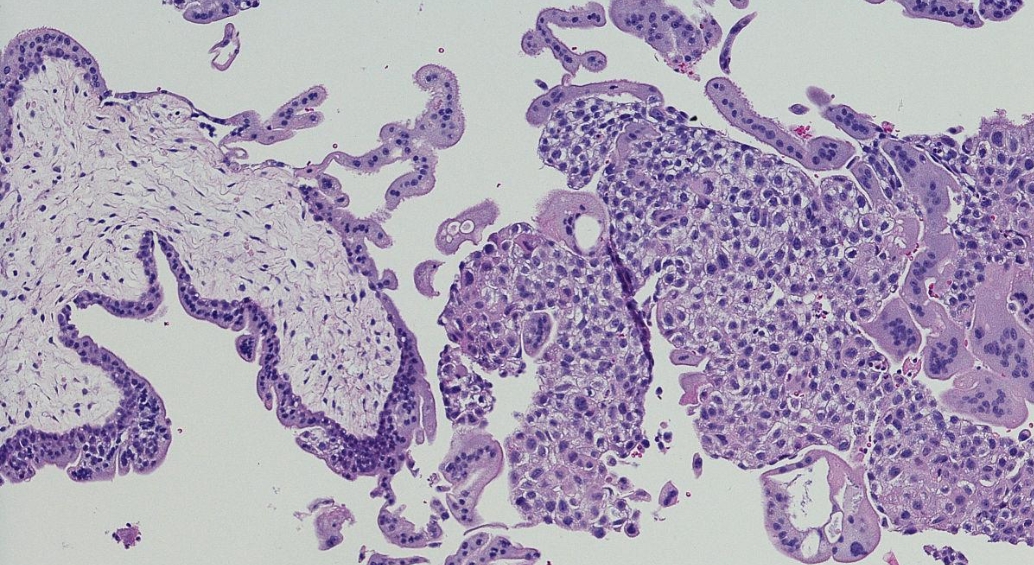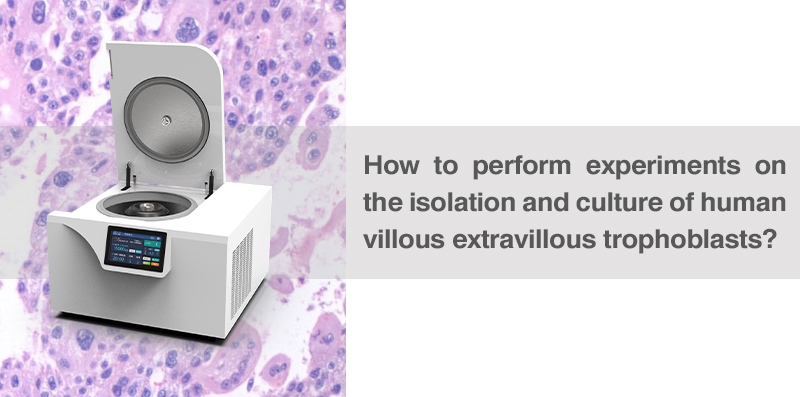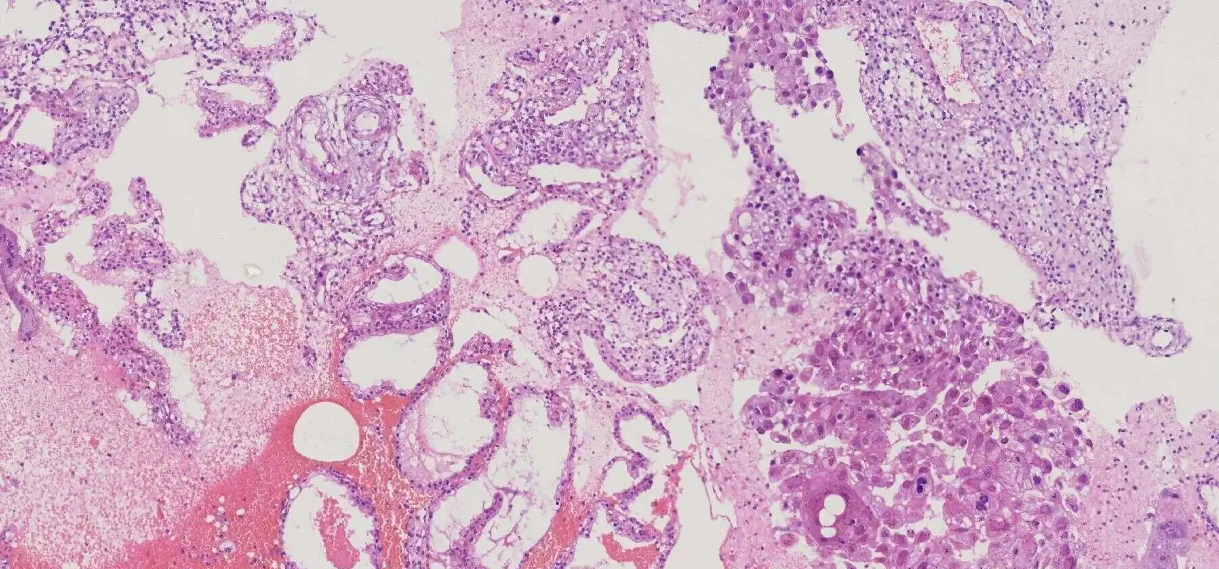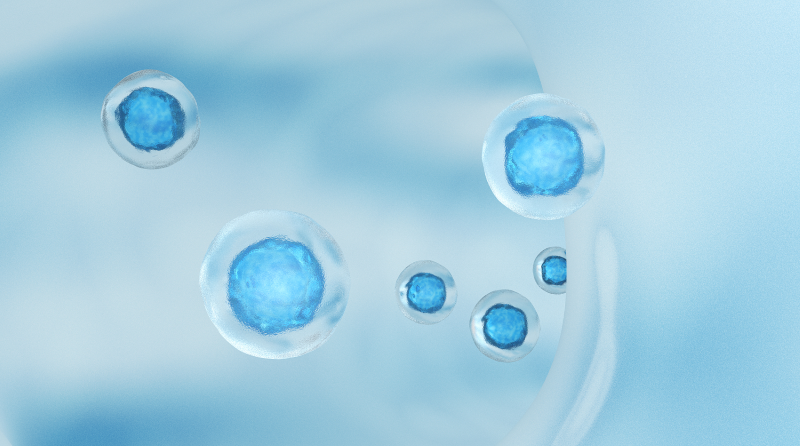Cells with trophoblastic function are called trophoblasts, which originate from the trophoblast outside the embryo and are a key link in a normal pregnancy. After embryo implantation, trophoblasts divide, multiplasia, and differentiate to form EVCTs and villous cytotrophoblasts (VCTs) with distinctly different biological characteristics.
The basic principle of isolation and culture of human villous extravillous trophoblasts is that EVCT has the ability to invade, aggregates in the deep part of the uterine decidua to form islands, and is in closest contact with uterine decidua cells, which is an important part of the maternal and fetal immune microenvironment.

The villous tissue was selected from the decidua and filtered by enzymatic digestion, then grinding and filtering, and density gradient centrifugation was carried out, and the 40% density layer was absorbed according to the density of the cells to obtain trophoblast cells, and EVCT was further purified by short-term culture at different times.
According to the morphology, phenotype and functional characteristics of the cells, the cells were identified, isolated and purified by immunohistochemistry or fluorescent antibodies that simultaneously labeled cell surface antigens for flow cytometry sorting, which makes a foundation for in-depth discussion of trophoblast biological functions.

Reagents & Instruments
Reagent:
PBS solution, D-Hanks solution, RBC lysate
DMEM/F12 culture medium, fetal bovine serum, trypsin
Collagenase Type IV, DNase Type I, Fibronectin (FN)
Type IV collagen, Matrigel, Percoll stock solution, antibiotics
Instrument:
Ophthalmic scissors, tweezers, screens of different sizes (80 mesh, 300 mesh)
All kinds of petri dishes, syringe handles, plastic centrifuge tubes of different specifications
1.5 ml EP tubes, pipettes, Welso WLR600 tabletop low-speed refrigerated centrifuge
Magnetic pole and bead sorting columns, CO2 incubators, water bath shakers, flow cytometers

Experimental Procedure
The basic steps for isolation and culture of human villous extravillous trophoblasts can be divided into the following steps:
1. Reagent preparation
(1) Type IV collagen solution: dissolve type IV collagen with 0.25% glacial acetic acid, and fully dissolve it at 4 °C overnight, with a final concentration of 2.0 mg/ml. When using, the plate was packed at 6~10 μg/c㎡ and overnight at 4 °C. Cell culture plates coated with type IV collagen can be sterilized overnight with UV irradiation or rinsed with 75% ethanol.
(2) FN solution: dissolve 1 mg of FN dry powder in 1 ml of sterile distilled water, leave it at room temperature for 30 minutes to dissolve it naturally, and store at a concentration of 1 mg/ml. Aliquot into 20 μl/tube and store at -70 °C.
(3) Dissolve 20 μl of FN solution into 1 ml of FD medium ( concentration of 20 μg/ml), pour into a Petri dish with a diameter of 35 mm, incubate at room temperature for 45 minutes, and discard the medium.
Note:
Immediately coated Petri dishes can be used or stored at -20 °C, but not more than 2 weeks.
2. Fresh decidual tissue was washed three times with 1x PBS to remove blood clots and fetal membranes, and villous tissue was obtained and cut into 1 mm 3 pieces with ophthalmic scissors.
3. Add 0.25% trypsin and 0.1% DNase I, digest in a water bath at 37 °C with gentle shaking for 5 minutes, then aspirate the digest and discard.
4. The remaining tissue was digested with 0.25% trypsin and 0.1% DNase I in a water bath at 37 °C for 10 minutes, the digestion was aspirated, and 10% calf serum was added to terminate the digestion. Repeat this for 3~4 times, and collect all the supernatant.
5. The digested supernatant rich in trophoblasts was filtered through an 80 mesh and 300 mesh sieve in turn, the filtered liquid was collected, centrifuged at 300 g for 10 minutes, and the supernatant was discarded.
6. The cell pellets were resuspended and plated on a discontinuous Percoll gradient (10%~70%, one gradient per 10%), and centrifuged at 1000 g for 20 min.
7. Absorb Cells with 40% density layer (p=1.048~1.062 g/ml) as trophoblasts, and add DMEM high-glucose culture medium containing 10% fetal bovine serum after washing.
8.Adjust the cell density to 5x10/ml, plant in a pre-coated type IV collagen (or FN or Matrigel)-coated plate, and incubate adherently for 10 minutes to remove easily adherent fibroblasts. Incubate in a 37 °C, 5% CO2 incubator for 24 hours before changing the culture medium for the first time.
9. After 24 h, the growth status of the cells was observed under an inverted phase contrast microscope. EVCT can migrate and aggregate, but it does not fuse, and the proliferative ability is weak.
10. Immunohistochemical identification of the obtained cells was performed based on the characteristics of vimentin negative, CK7 positive.
11.After being labeled with anti-HLA-G surface antibody, FACSAriaII sorted and purified HLA-G+ villus extravillous trophoblast cells with a purity of >95%.

Note
●Villous tissue can be digested with 1 mg/ml collagenase IV and 0.1 mg/ml DNase I depending on laboratory conditions.
●EVCT has a weak proliferative capacity, and too many passages can easily cause the loss of certain biological characteristics of cells, so it is important to reduce the number of passages in cultured cells.
●EVCT and VCT both express CK7 and do not express vimentin, and can be identified by c-erbB-2 immunohistochemistry to distinguish between EVCT (positive for c-erbB-2) and VCT (negative for c-erbB-2).

Follow official account